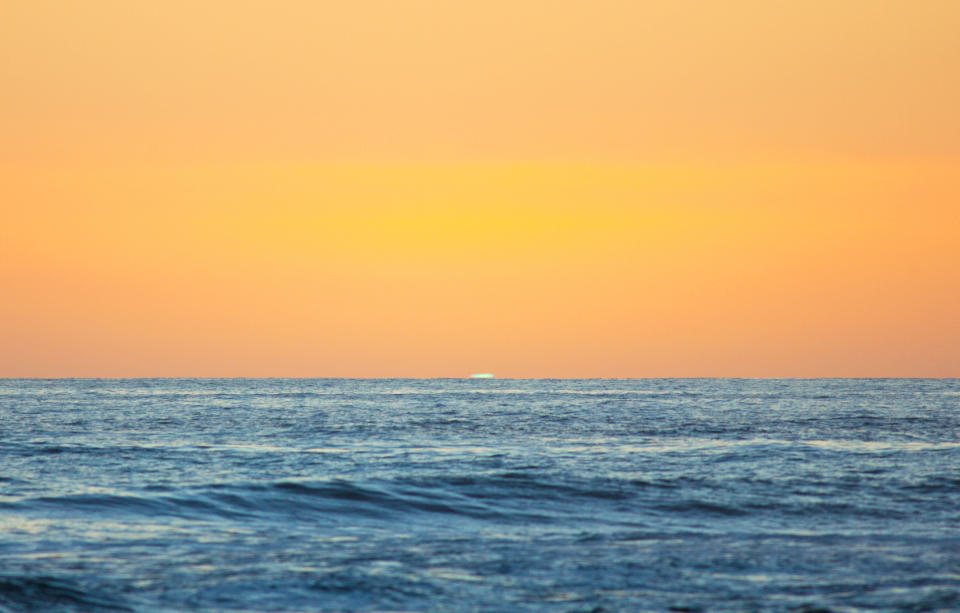Everything You Need to Know About the Green Flash
Sometimes, as the sun disappears below the horizon, it seems to change color—a so-called green flash, marking any number of things, according to folklore. Fans of Pirates of the Caribbean movies might think that a green flash signifies the return of a soul from the afterworld; readers of classic science fiction may believe Jules Verne’s claim that “he who has been fortunate enough once to behold it is enabled to see closely into his own heart and to read the thoughts of others,” written in Le Rayon-Vert, or The Green Ray.
But what does the green flash really mean? What causes it? And, most importantly, how can you see it for yourself? All that, and more, below:

What is a green flash?
Just what it sounds like: A flash of green light that occurs as the sun crosses the horizon. The whole sun may appear to change colors, or the flash might look like a small rim of light on the horizon. One kind of green flash even looks like a beam of light shooting away from the sun.
RELATED: These Bathtubs Have the Best Ocean Views in the World
What causes the green flash?
A green flash is caused when Earth’s atmosphere refracts, or bends, and scatters light from the sun. Wavelengths of other colors (like red and orange, the colors one would usually associate with the setting sun) are filtered out, and the green ones are able to reach observers’ eyes. A green flash—or similar phenomena, like a green rim or a green ray—are often reported at sunset, though they can occur at sunrise, too. (For a more in-depth explanation, check out this science-heavy introduction to green flashes.)
How can you see it?
The sun must be near the horizon, as it is at sunrise and sunset. It’s easier to catch green flashes at sunset, because observers know where to look, but they can be seen at sunrise. Ideal viewing conditions include clear skies, with a visible horizon free of clouds and haze.
Green flashes are often spotted over the ocean, but you don’t necessarily need to be on the water to see one (aren’t ocean sunsets the best sunsets, anyway?). You do need a distant horizon, such as over a flat desert or a large lake, which makes far-off ocean horizons perfect for green flash–spotting.
Green flashes happen quickly, so be sure to pay attention as the sun gets close to the horizon. Avoid staring directly at it, though, as that might dazzle your eyes. Then, if conditions are right, as the sun dips across the horizon, you might catch the flash!
RELATED: Everything You Need for a Dreamy Sunset Cruise
What does it mean?
Plenty of scientific research and evidence explains the causes of the green flash, which pretty much rules out the returning soul myth of pirate lore. But can seeing the green flash help you know yourself better, or help you better understand the people around you? Perhaps that kind of meaning lies only in the eyes of the beholder.
Photos: ArtMarie/Getty Images; YinYang/Getty Images


